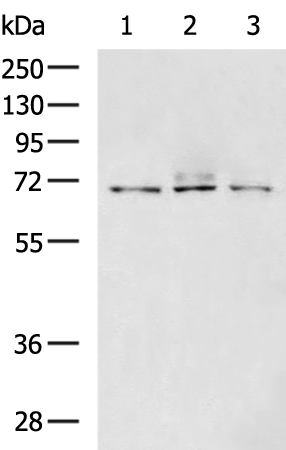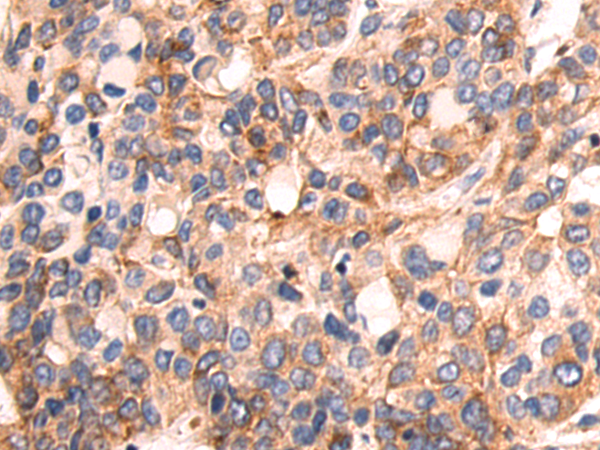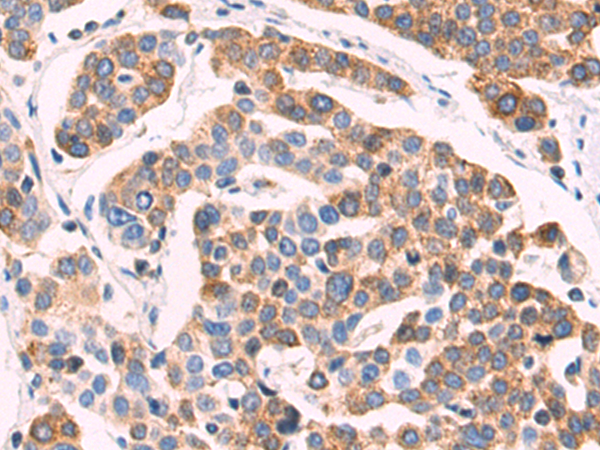


| WB | 咨询技术 | Human,Mouse,Rat |
| IF | 咨询技术 | Human,Mouse,Rat |
| IHC | 1/50-1/200 | Human,Mouse,Rat |
| ICC | 技术咨询 | Human,Mouse,Rat |
| FCM | 咨询技术 | Human,Mouse,Rat |
| Elisa | 1/5000-1/10000 | Human,Mouse,Rat |
| Aliases | ENTH; EPN4; EPNR; CLINT |
| WB Predicted band size | 68 kDa |
| Host/Isotype | Rabbit IgG |
| Antibody Type | Primary antibody |
| Storage | Store at 4°C short term. Aliquot and store at -20°C long term. Avoid freeze/thaw cycles. |
| Species Reactivity | Human, Mouse |
| Immunogen | Fusion protein of human CLINT1 |
| Formulation | Purified antibody in PBS with 0.05% sodium azide and 50% glycerol. |
+ +
以下是关于CLINT1抗体的3篇代表性文献的简要概括:
---
1. **文献名称**: "CLINT1/Epsin4 interacts with the enteropathogenic Escherichia coli type III secretion system effector protein Tir"
**作者**: Smith A, et al. (2019)
**摘要**: 本研究揭示了CLINT1蛋白通过其抗体标记在宿主细胞膜上的定位,并与肠道致病性大肠杆菌的Tir蛋白相互作用,调控细菌感染过程中的宿主细胞骨架重组。抗体被用于免疫荧光检测CLINT1在感染模型中的分布变化。
2. **文献名称**: "The role of CLINT1 in retrograde transport from endosomes to the trans-Golgi network"
**作者**: Lee JH, et al. (2020)
**摘要**: 利用CLINT1特异性抗体进行蛋白质免疫沉淀,研究者发现CLINT1通过与逆行运输相关复合物(如Retromer)结合,调控内体到高尔基体的货物运输。抗体验证了CLINT1在HeLa细胞中的亚细胞定位。
3. **文献名称**: "CLINT1 genetic variants and protein expression in schizophrenia: A case-control study"
**作者**: Zhang Y, et al. (2021)
**摘要**: 该研究使用CLINT1抗体对精神分裂症患者脑组织样本进行Western blot分析,发现CLINT1蛋白表达水平与特定基因变异相关,提示其在突触囊泡循环中的潜在病理作用。
---
**备注**:CLINT1(Clathrin Interactor 1)又称Epsin4.主要参与网格蛋白介导的膜运输。上述文献中抗体的应用场景包括免疫荧光、Western blot和蛋白质相互作用研究。如需具体实验细节或DOI号,可进一步补充说明。
×